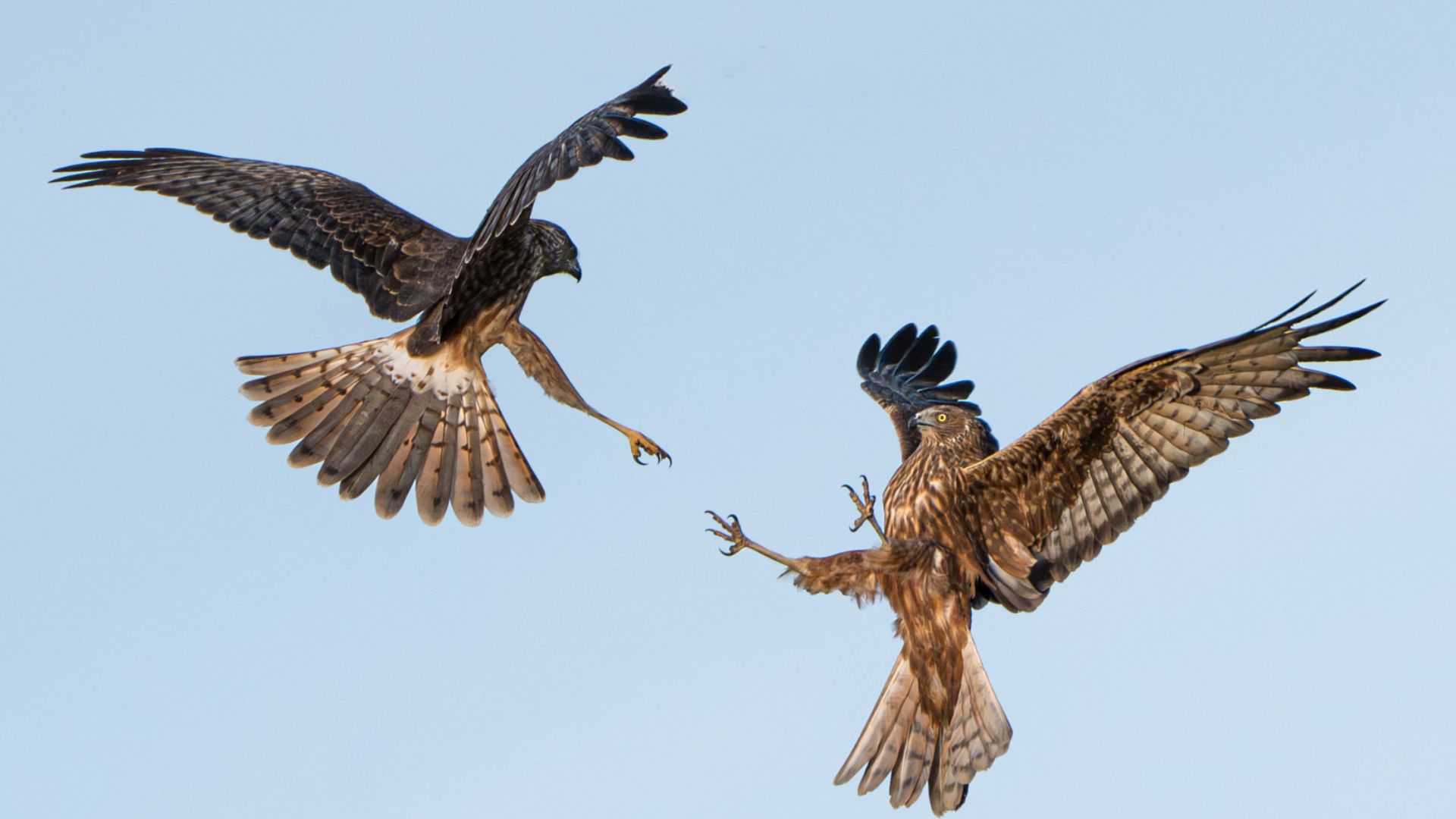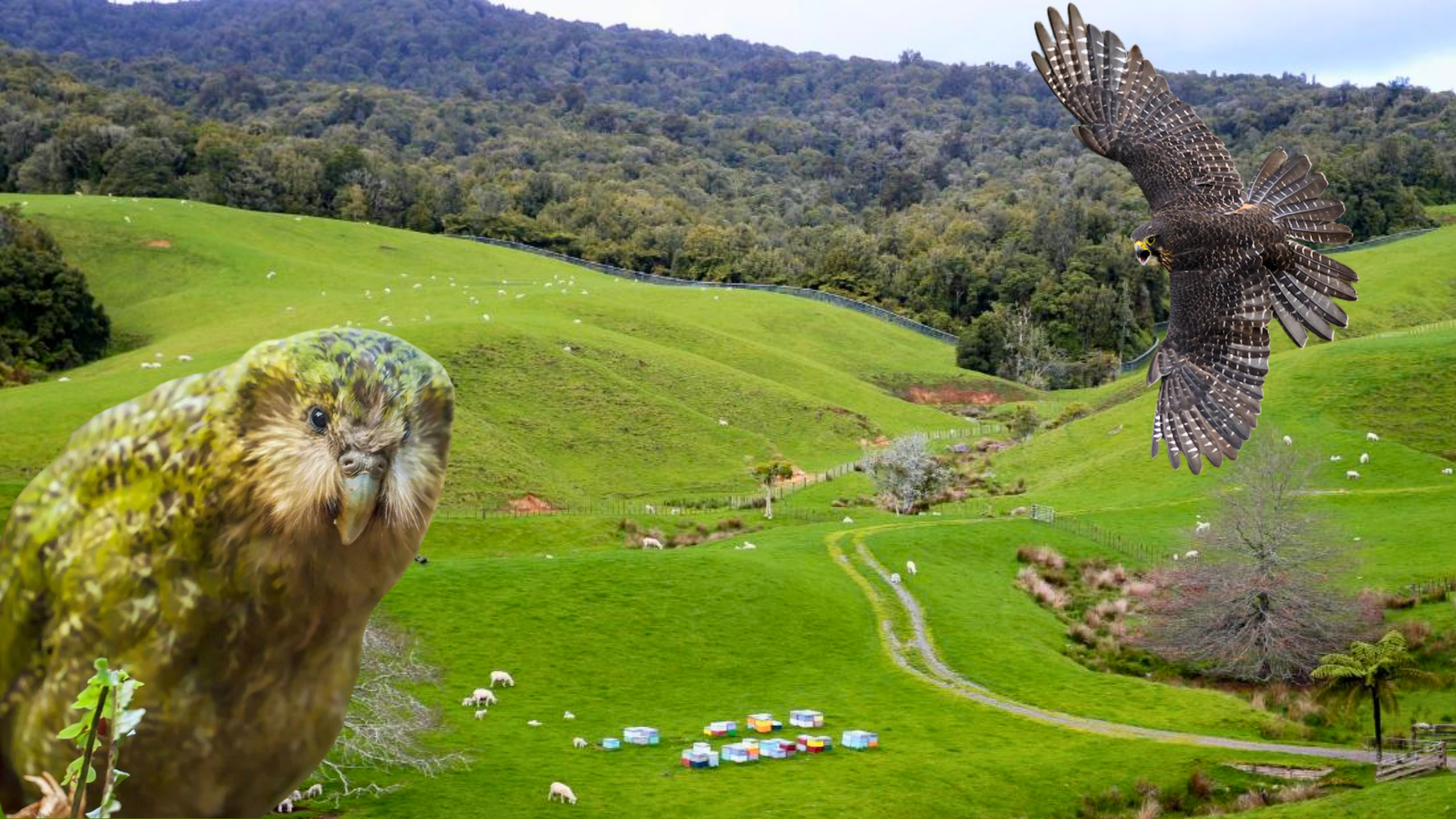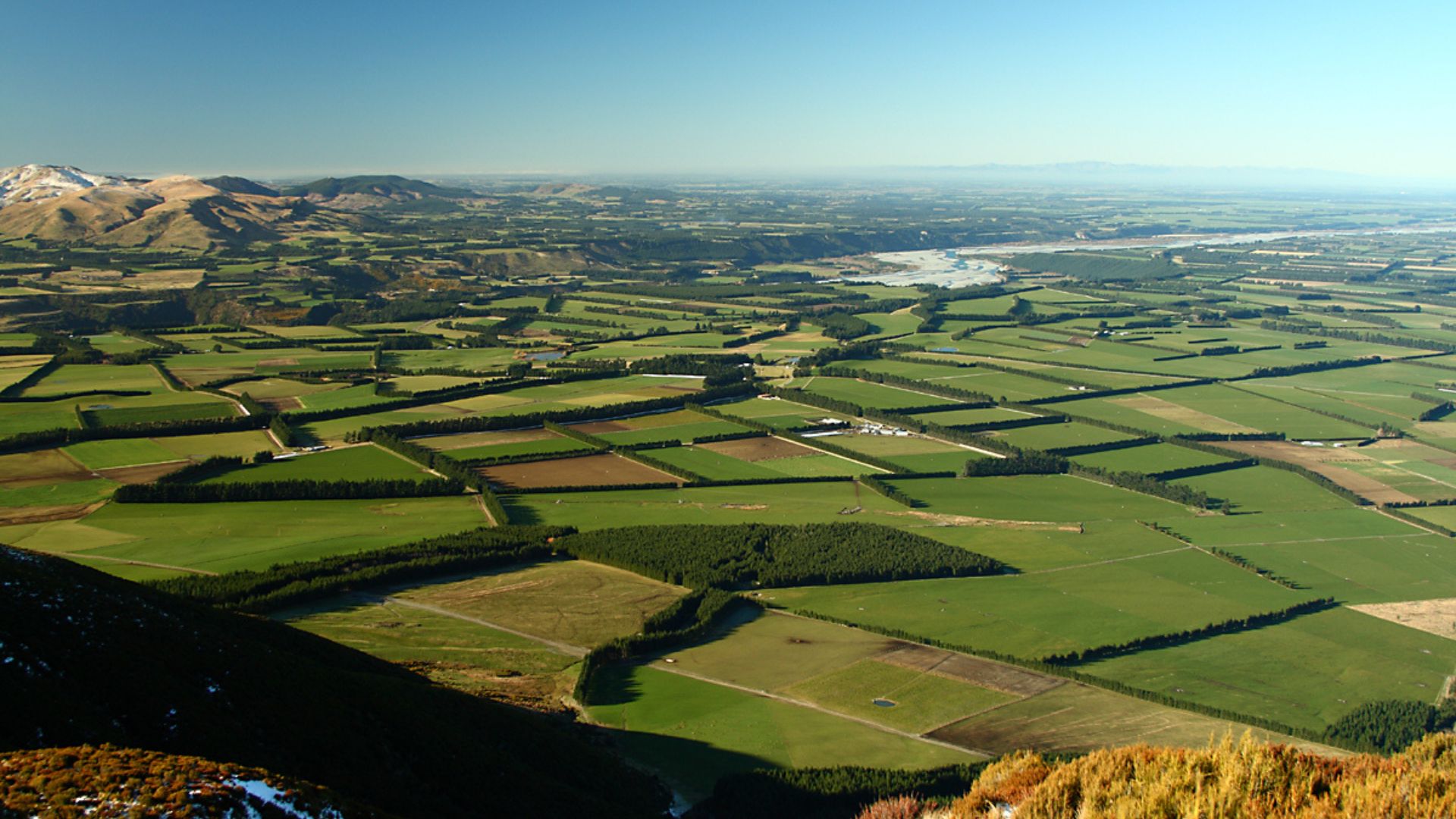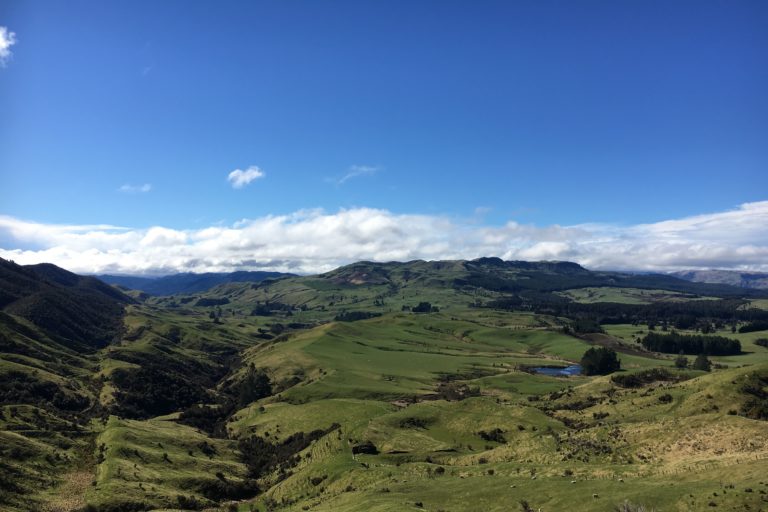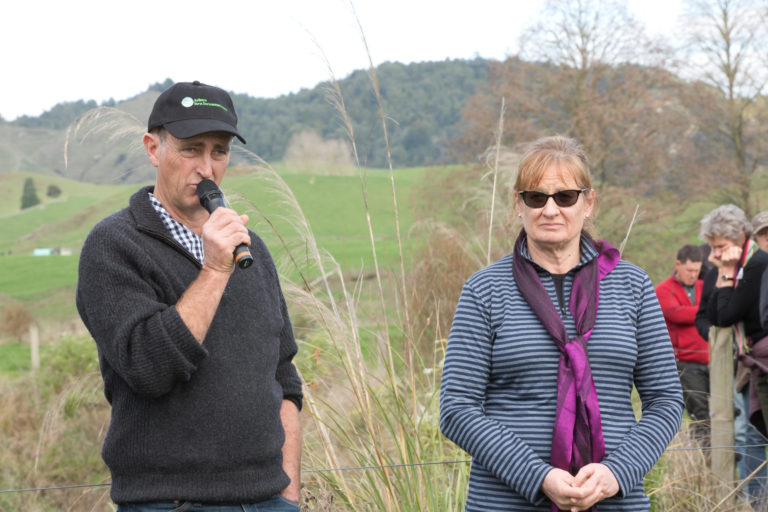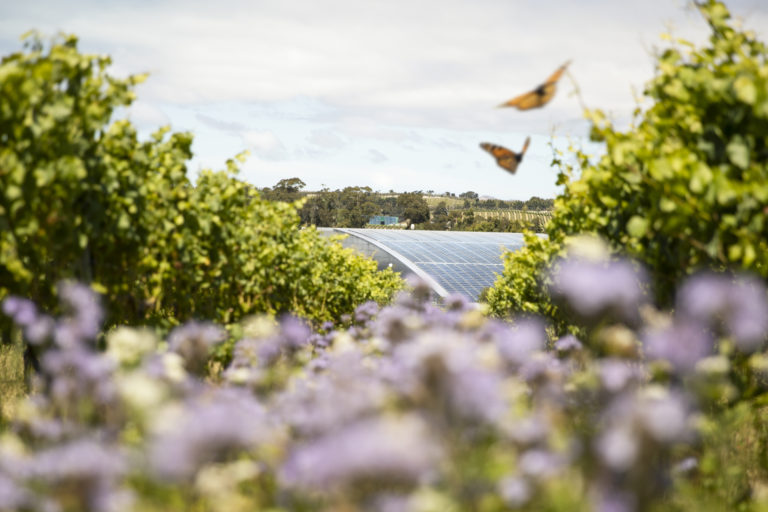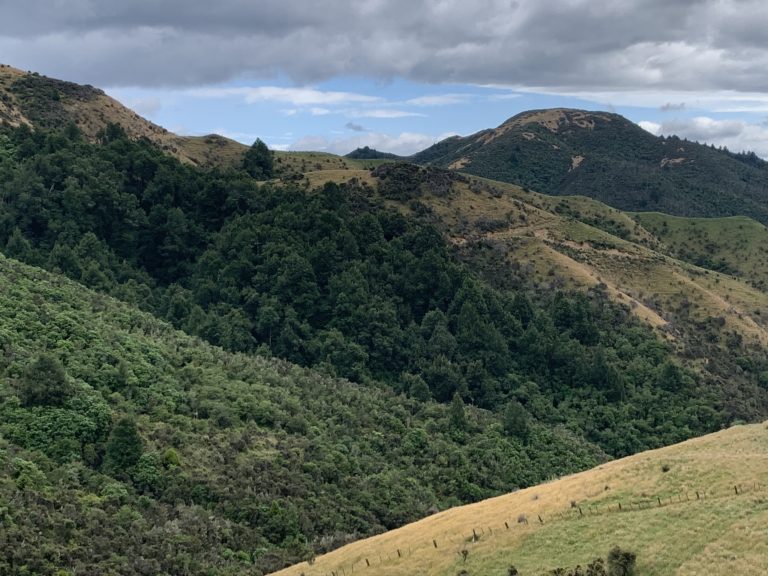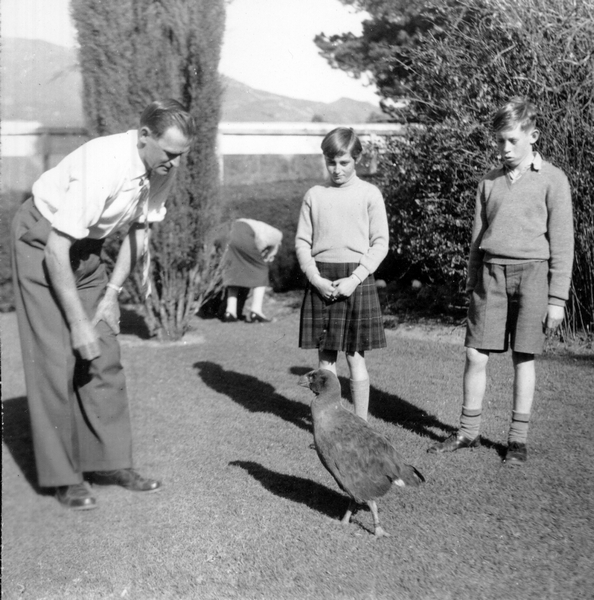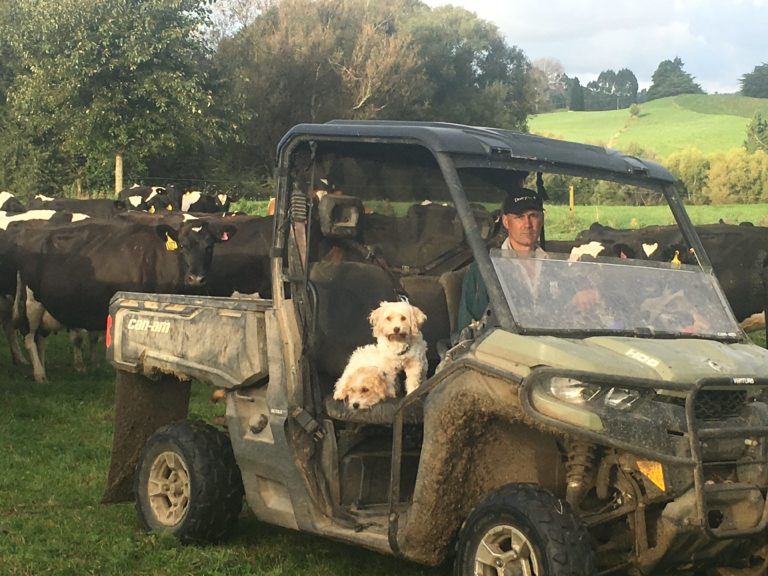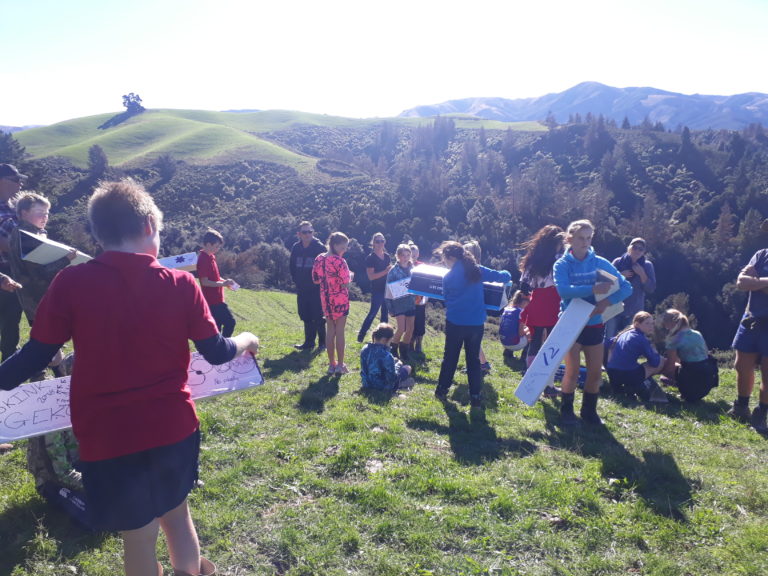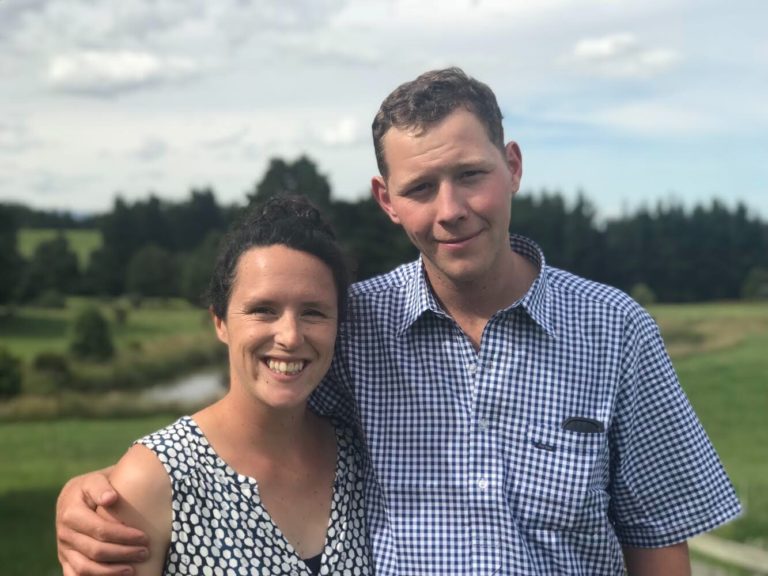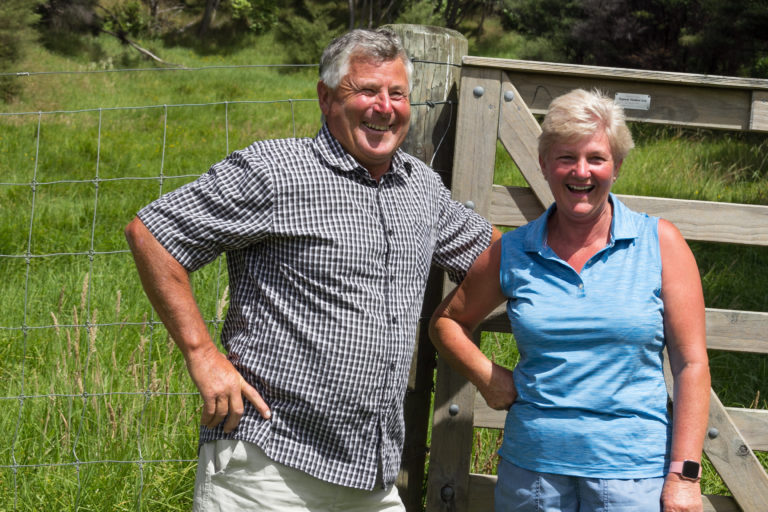Other articles tagged with Farmers
The possum buffet: bird helps clean up trap catches
Kāhu are messy eaters and have questionable table manners and social skills, but they have become unexpected helpers for Hamish Trolove's possum disposal.
Wild neighbours: living next to an ecosanctuary
Living near an ecosanctuary comes with unforgettable wildlife encounters – and big responsibilities.
Win-win: farming can help nature thrive and vice versa
Many farmers are already tapping into innovative resources, actively sowing the seeds of positive change for on-farm biodiversity.
Farm between two forests rich in rare wildlife
Dan Herries manages Taramoa Station in Puketitiri, Hawke’s Bay, which lies between two significant and beautiful blocks of forest.
Farm biodiversity map highlights falcons, kākahi and glowworms
Mark and Felicity Brough have created a biodiversity map of their sheep and beef farm at Paerua near Waitomo, in the central King Country.
Yealands Estate adds trapping to their eco-friendly initiatives
Sustainability has always been part of the Yealands Vineyard vision. Recently they've added trapping to their long list of eco-friendly initiatives.
No working dogs but lots of kiwi on Okaihau dairy farm
Jane and Roger Hutchings haven’t had a dog on Lodore Farm, their 450-hectare Northland property, in over 20 years – but they do have a lot of kiwi.
Elwyn Welch – a man, his bantams and a tale of takahē
Most people have never heard of Elwyn Welch. Back in the 1950s, he and his trained bantam hens had a role in the conservation and breeding of the takahē.
Patoka dairy farmers enjoy benefits of predator control
Dairy farmers, Nick and Nicky Dawson from Patoka, near Hastings, have been going hard out with predator control in the last four years or so.
Possum numbers surprise Canterbury farming family
Duncan and Tina Mackintosh farm White Rock Mains in North Canterbury. 92 hectares of regenerating beech forest is protected by a QEII covenant.
Fantails are a sign of change at Barry Farms
Barry Farms at Ashley Clinton includes an 8 hectare bush block which has been under QE II covenant for over 25 years.
Ross and Eleanore Webber determined to beat possum come-back
Ross and Eleanore Webber farm a 195-hectare property at South Head, overlooking the Kaipara Harbour and established two QEII covenant blocks 15 years ago.
Otago groups join forces for Predator Free Dunedin
It’s the new group on the block. Predator Free Dunedin launched just a few weeks ago in early October.
Port Chalmers farming family helps keep ‘Halo’ free of predators
With Orokonui Sanctuary nearby, Port Chalmers farmers John and Shona Chapman had some good reasons for trapping predators on their own land.
Birds return favour keeping nursery pests at bay
Three generations of the Bayly family are involved in trapping predators on the family farm on the Kaipara Coast, half an hour’s drive north of Auckland.

